Site wise research
 PHC in Cambodia
PHC in Cambodia
Following the Millennium Development Goals 2001 to 2015, Sustainable Development Goals have called for reducing the maternal and child mortality and morbidity rates. These rates have shown measurable reduction. However, the incidence of preventable deaths remains high in low- and middle-income countries in Southeast Asia. One of the main reasons could be the inadequate uptake of care for mothers and newborns during the antenatal, delivery, and postnatal periods. In this context, the concept of “the continuum of care” has been promoted in the field of global health to improve the maternal and newborn’s health status. The concept calls for increasing the uptake of care for mothers and newborns successively from the antenatal to postnatal periods. However, in most remote areas, realizing the successive uptake of care faces such challenges as long distance and lack of transportation from the home to the health facilities.
Read More
PHC  in China
in China
Partnership of PHC China started in September 2017 when a medical doctor from Guizhou provincial center for disease control and prevention (Guizhou CDC) visited at Kyushu University as Sakura Science Program for 3 weeks. In October 2019, six members of Guizhou CDC visited at Kyushu University as Sakura Science Program. We have been collaborating in (1) publishing several book chapters related with PHC, (2) conducting joint seminars and meetings, and (3) sharing telemedicine and personal health record (PHR) related information.
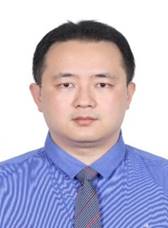
Yuandong Hu
Institute of Chronic Disease, Guizhou Provincial CDC
 PHC in India
PHC in India
Partnership of PHC China started in September 2017 when a medical doctor from Guizhou provincial center for disease control and prevention (Guizhou CDC) visited at Kyushu University as Sakura Science Program for 3 weeks. In October 2019, six members of Guizhou CDC visited at Kyushu University as Sakura Science Program. We have been collaborating in (1) publishing several book chapters related with PHC, (2) conducting joint seminars and meetings, and (3) sharing telemedicine and personal health record (PHR) related information.
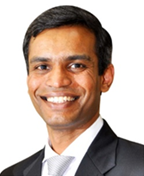
Manish Biyani
Director, Biyani Group of Colleges, India. President, BioSeeds Corporation, Japan. Professor (Visiting), JAIST and Kwansei Gakuin University, Japan.
 PHC in Indonesia
PHC in Indonesia
PHC in Indonesia has not yet started. However, collaborative partnership was established with University of Gadja Madah (UGM), Department of Health Policy and Management (DHPM) when Kyushu University team had a meeting at Yogyakarta city, Indonesia in February 2020. DHPM has been doing a telemedicine research jointly with Indonesia National Health Insurance Agency and National Government. Kyushu University team had an site visits at both rural village health center and urban health center at Yogyakarta and introduced a concept of PHC.
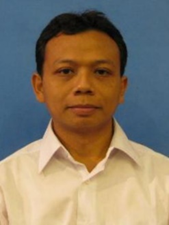
Lutfan Lazuardi, MD, Ph.D.
Associate Professor, Department of Health Policy and Management Indonesia University of Gadjah Mada.

Nurholis Majid, MD
Director Perkumpulan SInergi Sehat Indonesia.
 PHC in Malaysia
PHC in Malaysia
Initial face-to-face meeting on PHC in Malaysia was held in February 2020 at University of Malaysia, Sabah. Due to COVID-19 pandemic, we had several online meetings and trainings to start our joint PHC project in two villages in Kota Kibabaru, Malaysia. We had already official joint research agreement and ethical approval to start our pilot project in September 2020.
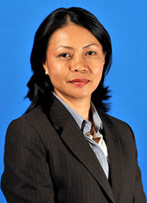
Dr. Nicholas Pang Tze Ping
Acting Deputy Clinical Director Hospital Universiti Malaysia Sabah (UMS).

Nurholis Majid, MD
Director Perkumpulan SInergi Sehat Indonesia.
 PHC in Pakistan
PHC in Pakistan
Within this fast-moving yet selective healthcare delivery context, the GramHealth Portable Health Clinic (PHC) was chosen as the core component of a corporate pilot project. Named SehatMobile, the project sought to mitigate health risks for seasonal migrant workers engaged in the collection and sorting of agricultural and non-agricultural waste that form the raw material for the company’s primary product. Migrant agri-waste workers are a marginalized community that follows the sowing-cropping cycle along a well-defined geographical axis, yet typically subsists outside community-based social nets. Often ignored by the national welfare system, they are exposed to health hazards associated with “tuberculosis, asthma, cough, skin diseases, allergies and other contagious diseases.” The PHC fit the need for an out-of-the-box solution for the following rationale:
Read More
- Focus on preventive rather than curative care, so financial and opportunity cost of curative care is reduced
- Affordable access to qualified practitioners, so workers are less exposed to mal-practice and quackery
- Entrepreneurial model of service, so the budgetary burden on corporate resources is minimized
- Technology-driven triage that is independent of practitioner discretion, so quality of care is higher
- Integration of patient data across service delivery tiers, so healthcare outreach strategies can be optimized
- Real-time, remote, data-rich decision support for practitioners, so quality of care professional remains high
- Portability and scalability, so mobile fieldworkers to take preventive healthcare services to the very doorstep via ubiquitous mobile networks
For SehatMobile, PHC became a delivery system integrator, for a integrated service platform offering preventive care, clinical services, screening, referral and follow-up, with added elements for social empowerment through education on health & nutrition, reproductive rights, and citizenship. Design criteria included service innovation, need-responsiveness, demonstrability, and value-for-money. As the core technology platform for the SehatMobile outreach model, the PHC ties together a custom-built vehicle platform equipped with specialized modular service consoles to deliver:
- Primary Care Ambulatory, Tertiary Referral & Follow up: Full-time SehatMobile staff conducting out-patient clinic supported by the PHC’s 16-parameter tele-medicine protocol, and triaging patients by color-coded results. Rita of specialist physicians designated by their host institute available online during agreed time-slots to backstop the outpatient clinic. Medical records centralized online to help referrals and followed up.
- Health Education, Preventive Care & Occupational Safety: Specialists from collaborating partners conducting awareness and education in preventive medicine, nutrition, hygiene and sanitation practices, and occupational health. Awareness and behaviour change communication materials and staff provided by program partners to run sessions and demonstrate personal protective equipment (PPEs) and emergency response drills.
- Rights & Citizenship Awareness & Community Organization: Collaborating community or citizens organizations using SehatMobile as platform for existing programs on citizenship awareness and community action for human rights, access to justice and community empowerment as part of the SehatMobile schedule.
- Social Business Skilling & Entrepreneurship Training: Invited specialists offering training and pre-incubation, and community champions promoting independent and entrepreneurial thinking among migrant communities, motivating workers’ families and friends to organize into social businesses, such as recycling cooperatives, so that members claim social security benefits or workers’ compensation under existing law.
The pilot was designed for implementation at two distinct but integrated levels. The first phase included the design and fabrication of one SehatMobile vehicle installed with PHC and ancillary service delivery systems, training of project staff, induction of delivery partners and the establishment of a field-based clinicians’ referral network and handing over the tested SehatMobile to BSP. The second phase included technical backstopping, over a 12-month pilot phase, and the implementation of a hand-over strategy towards a successor arrangement. The advantage of such a phased approach was that it the pilot was able to seamlessly integrate into future programs in response to emerging demand. The SehatMobile unit was delivered in mid-2017, and since the culmination of the backstopping phase is now fully rolled out.
The unit as designed, carries one primary care house physician, one nurse or medical auxiliary, one ICT data technician, and one driver-assistant. There is room for up to two visiting specialists, contributed by program partners according to an agreed schedule, to provide consultations in medical specialties, screening & diagnostics, ambulatory procedures, as well as health education, reproductive health services or citizenship and mobilization.
The original design illustrates the PHC’s value beyond simply a mobile health technology platform. The Pakistan experience indicates its utility as a hub for a variety of well-being initiatives. The piloted model demonstrates a ready interface with target populations, zero-cost mobilization and high-impact penetration of ideas, services and products through partnerships leveraging mutual benefit. Delivery partners chosen for the pilot were a select few, but the potential for involving wider stakeholder participation makes SehatMobile a reliable coordinating hub for healthcare and wellbeing services at the doorstep to under-served communities.
The challenge specific to the SehatMobile vehicle platform is the high-cost of fabrication and maintenance. However, the pilot confirmed that the PHC technology core lends itself to numerous adaptive uses, which can be tailored to fit a variety of terrain, and tighter budgets. The follow up being planned for Pakistan’s Balochistan province aims to apply learnings from the Kasur pilot into designing a need-responsive fee-for-service model that requires less start-up investment.
Within Pakistan’s context SehatMobile serves to address two challenges. First, it enables remote and under-privileged populations with poor access to healthcare and well-being services to be included in the national mainstream using expanding and ubiquitous technology. Second, online availability of healthcare providers, augmented with face-to-face engagement with key service providers, skill-teachers and opinion leaders empowers marginalized communities to expand horizons, integrate with the mainstream, acquire new insights and experience that enhances novel livelihood opportunities for more and more people.
 PHC in Thailand
PHC in Thailand
Innovation, Job Creation and Healthcare Service Delivery: Enterprise Model for PHC
As a mostly analogue system, especially in least and emerging developing nations, health care systems are traditionally ill equipped to cope with disruptive changes. Unlike other pandemics, Covid-19 has spread to every inhabitable continent within weeks, outpacing the health system’s ability to test, track, and treat people. In the next 10 years, healthcare sector will face major demographic changes that will dramatically impact which services are needed and how they will be delivered – millennials will exert more and more influence over healthcare delivery models.
Read More
While the current health care system is trying to manage largely through brick-and-mortar infrastructure, private sector investors and research institutions are leading the abrupt transition to accelerate a digital transformation within the health sector.
Urgent action is required to transform health care delivery and to scale up our systems by unleashing the convergence of technologies to:
- penetration into under-served markets (digital innovation)
- reduce lengthy and costly regulation (policy and govtech innovation)
- increase supportive payment structures (fintech innovation)
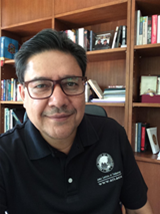
Dr. Faiz Shah
Director & President Yunus Center Asian Institute of Technology, Thailand.
 PHC in Bangladesh
PHC in Bangladesh
Lorem Ipsum is simply dummy text of the printing and typesetting industry. Lorem Ipsum has been the industry’s standard dummy text ever since the 1500s, when an unknown printer took a galley of type and scrambled it to make a type specimen book. It has survived not only five centuries, but also the leap into electronic typesetting, remaining essentially unchanged. It was popularised in the 1960s with the release of Letraset sheets containing Lorem Ipsum passages, and more recently with desktop publishing software like Aldus PageMaker including versions of Lorem Ipsum.
Lorem Ipsum is simply dummy text of the printing and typesetting industry. Lorem Ipsum has been the industry’s standard dummy text ever since the 1500s, when an unknown printer took a galley of type and scrambled it to make a type specimen book. It has survived not only five centuries, but also the leap into electronic typesetting, remaining essentially unchanged. It was popularised in the 1960s with the release of Letraset sheets containing Lorem Ipsum passages, and more recently with desktop publishing software like Aldus PageMaker including versions of Lorem Ipsum.

 PHC in Cambodia
PHC in Cambodia in China
in China PHC in India
PHC in India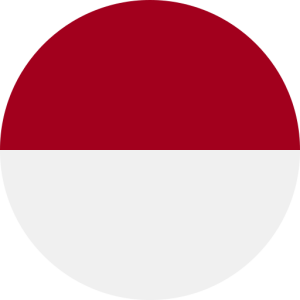 PHC in Indonesia
PHC in Indonesia PHC in Malaysia
PHC in Malaysia PHC in Pakistan
PHC in Pakistan PHC in Thailand
PHC in Thailand PHC in Bangladesh
PHC in Bangladesh